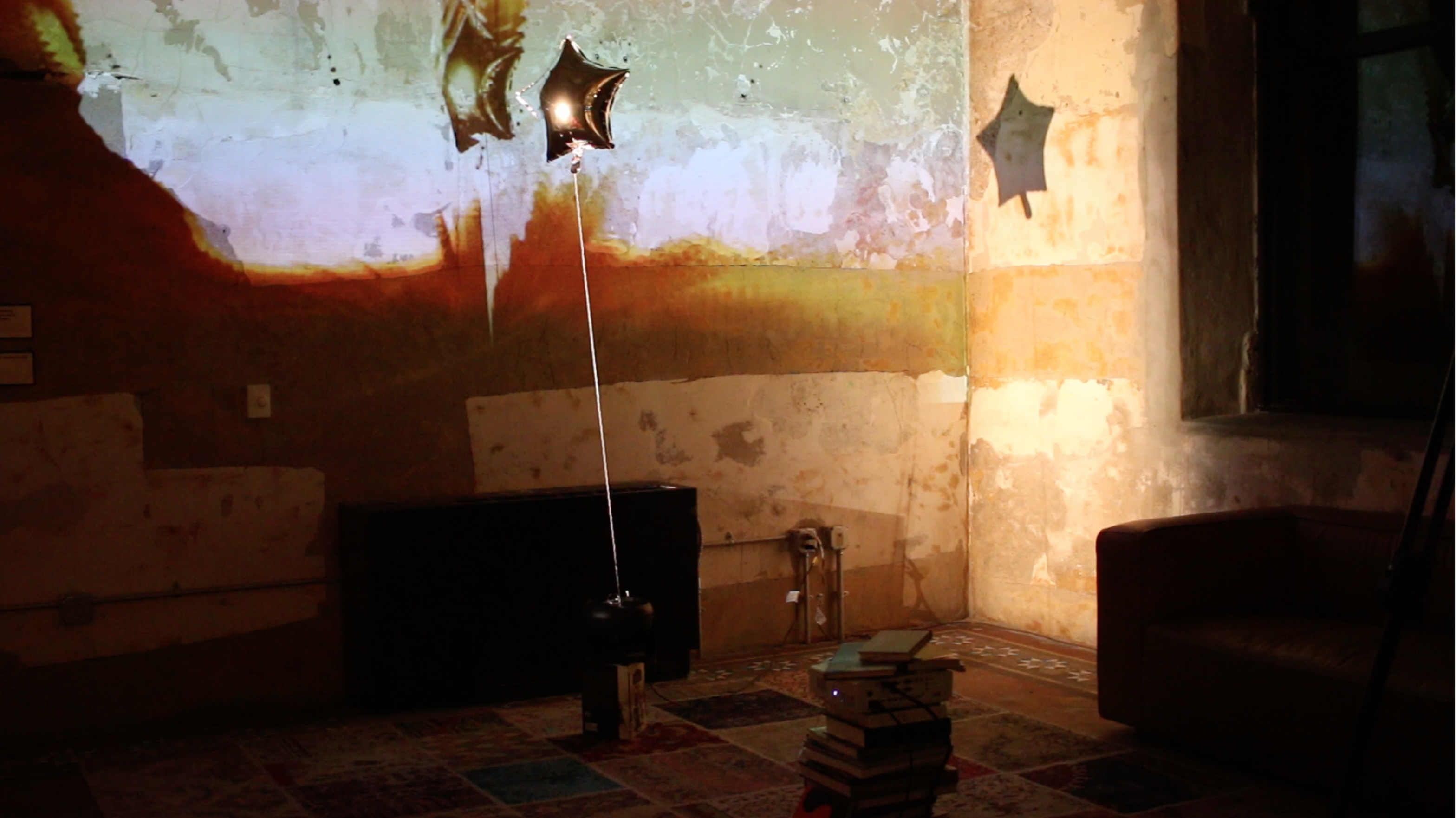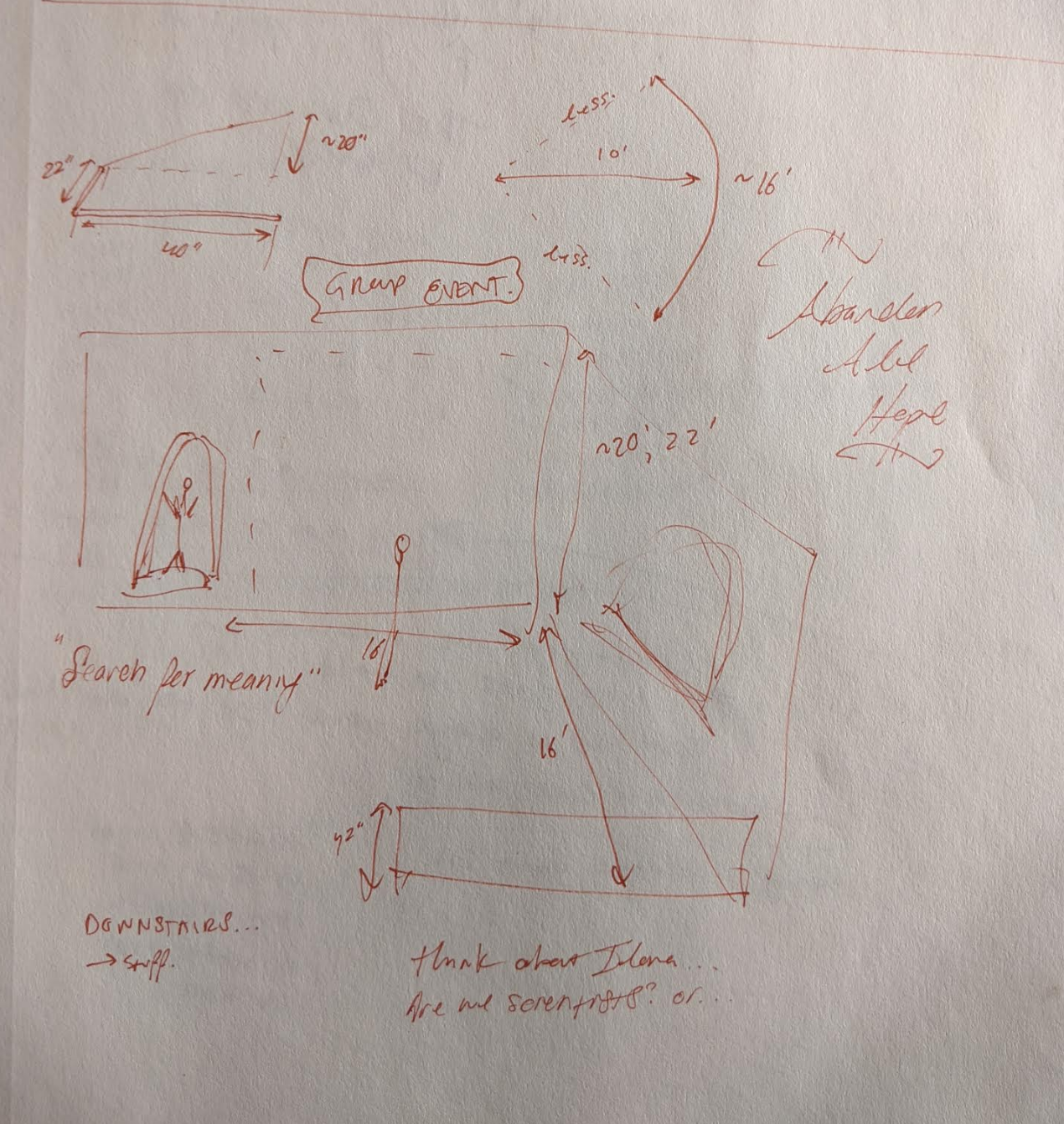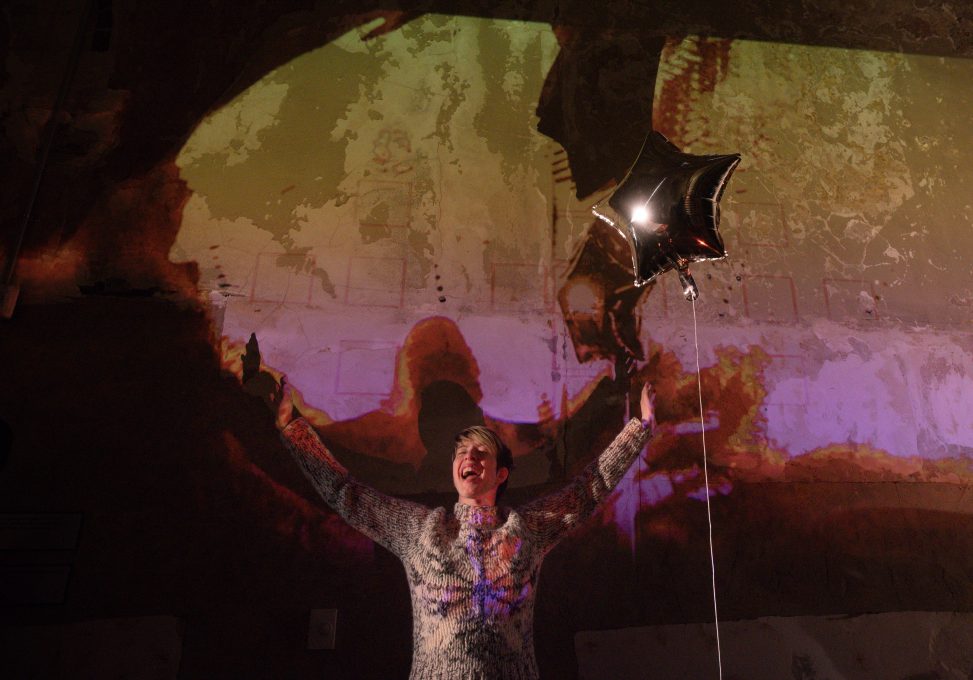
An audience member interacts with a mirrored balloon.
Judith Butler’s concept of performativity (standing most obviously on the shoulders of Marcel Merleau-Ponty’s phenomenology) proposes that we define the self, and the various types of identity that make up the self, as a process rather than something complete or stable.
Butler’s most famous example is that of gender. Gender (EG ‘womanhood’) means very different things in different cultures, and indeed while babies are born with somewhat differing endocrine systems, all arrive on earth unaware that tall shoes and pink things correlate to an authentic expression of certain genitalia. And yet, by early adulthood, for some the use of tall pink shoes feels to be an authentic expression of the self; and because it feels that way it (by definition) is. How does this happen?
According to Butler, the answer is that gender is essentially a process, in which you intentionally practice (or perform) certain ways of being that you perceive as being associated with you. And over time, both personally and a culture, this performance becomes natural and authentic. As such, what gender means is different for every person, and the agreed-upon end result (tall shoes = Woman) is not inevitable. This argument is supported by recent neuroscience: whatever you practice, you learn, and learning is a literal re-structuring of connections in the brain to prioritize certain outcomes. So whatever you practice, you become.
Which brings us to this piece, in which a balloon is demonstrating the process via which one can become a balloon.

Project Description
This is an ‘analog’ video delay piece: there is a projector pointed at a wall, and there is a camera pointed at the same wall. The slight difference in focus and geometry between the camera and the projector means that the projected image doesn’t quite match the camera’s capture of that image. This offset, when repeated 24 frames a second, results in interesting trailing patterns through space. The closer the focus and image are to each other, generally the more active the effect and the cooler the image.
This edition of the piece featured a mirrored balloon tied to a fan pointing straight up. The mirrored balloon naturally dances in the air of the fan, and so there is always an active input to the feedback system, to make the delay stream move around and look nice. The space is set up in such a way that it is also possible for audience members to get in front of the assemblage, and make their own patterns on the wall. There is a couch on one wall for people to hang out and watch like you would watch a fire on a stormy night. To tie things together thematically, the projector and fan are both stacked on top of piles of architectural books.
Process
This was a tricky one. The matching of the lensing between camera and projector is very finicky, and slightly different alignments and lightings create very different effects. I initially intended to create a system via which a participant could have their own body projected on them, while leaving feedback trails behind in their wake. This would have been a very different physical installation– but more to the point, it would have required the camera lens and projector lens to be as physically close to each other as possible, if the effect would be replicable across a range of distances from the camera. It eventually became clear that I didn’t have the equipment or installation space to do that correctly… and so I decided to move to a short-throw projector, and a camera with a medium-wide field of view. I’m still interested in the other piece, and I think it could be good someday… Maybe they could go in an installation together.

Extraordinarily useful notes on throw ratios

things you can write on paper before just eyeballing it

homebrewing
Finer Points
Things I enjoyed about this installation:
- Siting: the location of the work, at the top of the stairs, as a backdrop to two more static interactive works, felt successful to me. I was also lucky that the audio piece sited around the corner provided a great score for the dancing balloon. I thought this was a positive in its environment.
- Lighting: hard sidelighting the balloon from across the room felt successful as well. I was pleased to be able to put a shadow of the balloon on a bit of wall between the projection and an adjacent window. In addition to lighting the object well for the camera, I think this resulted in a more immersive and site-specific implementation. I like it when things can be “thick” with space.
- Other objects: the use of books, carpet, and couch were not initially part of the plan, but stuff that showed up (usefully or can’t-get-rid-of-it) in the space. I ended up enjoying all of the props, and wish that I had been able to make the gigantic Manfrotto tripod I was using somehow fit the mise-en-scene a little better as well.
- The spammy descriptive text on performativity felt very good. I like jokes like that, that are very stupid but very serious at the same time.
Things that could have been improved:
- Again, giant tripod. I used this large expensive tripod in order to have more fine control over the camera position relative to the projection. While this was very important and useful, I wish the object of it had been more dressed or otherwise intentional.
- Footpaths through active space: only the leading edge of the installation was really accessible to audience, and the couch was less than inviting. I could imagine a better cable management system, perhaps running under the rug and emerging through a hole, that could have made for a more welcoming space.
- Camera: I transitioned late from a Sony camcorder to a more fancy Sony DSLR. Sony DSLRs are not really made for video, and so while in video mode it had to be poked every half hour to keep from going to sleep… The DSLR was most useful in giving me finer manual control over focus and zoom, but didn’t have an amazing lens on it. I think better aperture control could have given me better results. Ultimately, I ended up paging through a bunch of its auto settings until I found an exposure algorithm I liked, and went with that. It’s possible the auto-exposure flutter helped the piece? Certainly adjusting the ISO had no effect on the feedback once that got going… I just wish I had spent more time with the equipment to fine tune my choices.

Comments are closed.